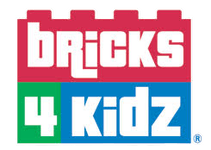- Origin of the Name: The name “LEGO” is derived from the Danish words “leg godt,” which mean “play well.” This perfectly encapsulates the company’s philosophy of encouraging creative play among children.
- Interlocking System: The unique interlocking design of LEGO bricks, introduced in 1958, is so precise that even bricks manufactured decades ago can still interlock seamlessly with those produced today. This consistency allows for endless combinations and creativity.
- World’s Tallest Lego Tower: The tallest Lego tower ever built reached a staggering height of 114 feet and 11 inches (35 meters). This impressive feat was achieved in Milan, Italy, in 2015, using over half a million Lego bricks.
- Lego Minifigures: The first Lego Minifigures were introduced in 1978. Since then, these tiny, articulated figures have become a staple in Lego sets, with over 8,000 unique designs created by the company.
- Lego Colors: Lego offers a wide array of colors for its bricks. However, the most popular color is red, followed closely by white and blue. The variety of colors not only adds to the aesthetic appeal of Lego creations but also enhances their educational value.
- Lego Sets in Space: Lego has a strong connection with space exploration. In 2011, a Lego space shuttle model became the first toy to be launched into space, accompanying astronauts on the Space Shuttle Endeavour.
- Largest Lego Set: The largest commercially available Lego set, as of the last knowledge update in January 2022, is the LEGO Art World Map, containing a whopping 11,695 pieces. It allows builders to create a detailed map of the world.
- Lego Movie Success: “The Lego Movie,” released in 2014, was a massive hit and grossed over $468 million worldwide. Its success led to the creation of a Lego Movie franchise, including sequels and spin-offs.
- LEGO Serious Play: The LEGO Serious Play methodology is a unique approach to problem-solving and team building. It involves using Lego bricks as a medium for communication, encouraging creative thinking and collaboration in professional settings.
- Lego Theme Parks: Legoland, a chain of family theme parks, has become a global phenomenon. With multiple locations worldwide, these parks feature attractions, rides, and displays entirely built with Lego bricks, providing an immersive experience for visitors of all ages.
- LEGO Education: Recognizing the educational value of their products, LEGO has developed specific educational sets and programs to promote learning in science, technology, engineering, and mathematics (STEM) subjects.
- Lego Brick Recycling: In an effort to be environmentally responsible, LEGO has committed to using sustainable materials. They have also initiated programs to recycle and reuse old bricks, allowing fans to send back their used bricks for reprocessing.
